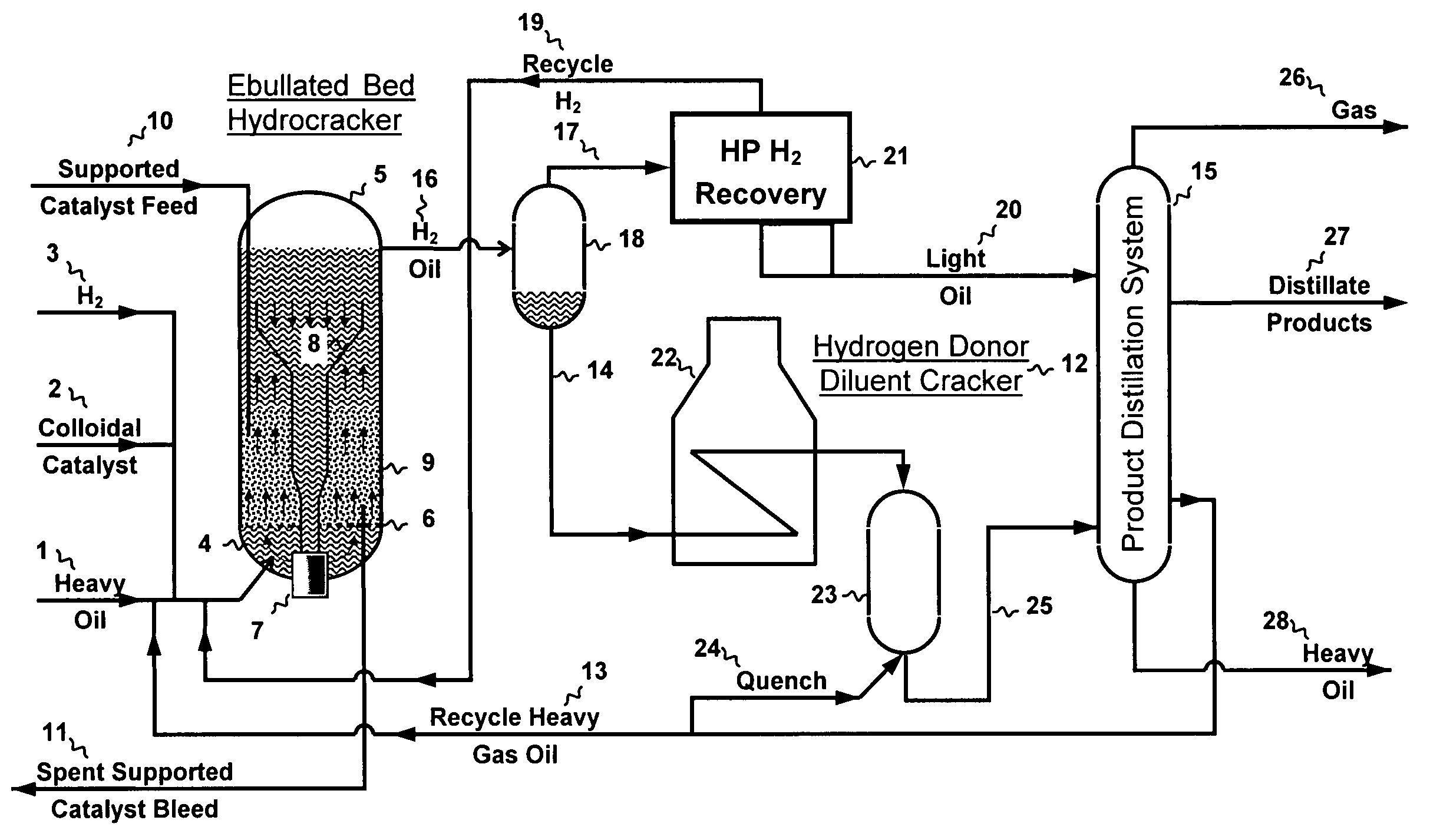Heavy oil hydroconversion process
a technology of heavy oil hydroconversion and hydroconversion reactor, which is applied in the direction of combustion type, effluent separation, and combustion using lump and pulverulent fuel, etc. it can solve the problems of heavy oil hydrocracker concept, unable to meet the requirements of more severe cracking conditions, and no commercially attractive approach has been identified to produce or regenerate hydrogen donor diluent feed, etc., to achieve the effect of facilitating hydrogen transfer and reducing the volume of the step d
- Summary
- Abstract
- Description
- Claims
- Application Information
AI Technical Summary
Benefits of technology
Problems solved by technology
Method used
Image
Examples
Embodiment Construction
[0051]The process combining heavy oil hydrocracking or hydrotreating and hydrogen donor conversion process will be described with the aid of FIG. 2. The feed heavy oil feed 1 is typically a vacuum resid with an initial boiling normal boiling point of about 975° F. (524° C.). The heavy oil feed typically contains between 5 and 40 weight percent asphaltenes and typically has a Ramsbottom carbon residue analysis value between 10 and 40 weight percent. Typically, between 0.01% and 1% of colloidal molybdenum sulfide catalyst 2 is added to the heavy oil feed 1 to primarily increase the hydrogenation of the asphaltene fraction. The hydrogen feed 3 is typically between 2 and 4 times the anticipated hydrogen consumption. Heavy oil 1, colloidal catalyst 2, and hydrogen 3 are fed into the plenum 4 of ebullated bed hydrocracker reactor 5 below the feed distributor 6. Recycle heavy oil is pumped 7 from the reactor down-corner 8 and is mixed with the heavy oil 1, colloidal catalyst 2, and hydroge...
PUM
| Property | Measurement | Unit |
|---|---|---|
| temperature | aaaaa | aaaaa |
| temperature | aaaaa | aaaaa |
| hydrogen partial pressure | aaaaa | aaaaa |
Abstract
Description
Claims
Application Information
 Login to View More
Login to View More - R&D
- Intellectual Property
- Life Sciences
- Materials
- Tech Scout
- Unparalleled Data Quality
- Higher Quality Content
- 60% Fewer Hallucinations
Browse by: Latest US Patents, China's latest patents, Technical Efficacy Thesaurus, Application Domain, Technology Topic, Popular Technical Reports.
© 2025 PatSnap. All rights reserved.Legal|Privacy policy|Modern Slavery Act Transparency Statement|Sitemap|About US| Contact US: help@patsnap.com



